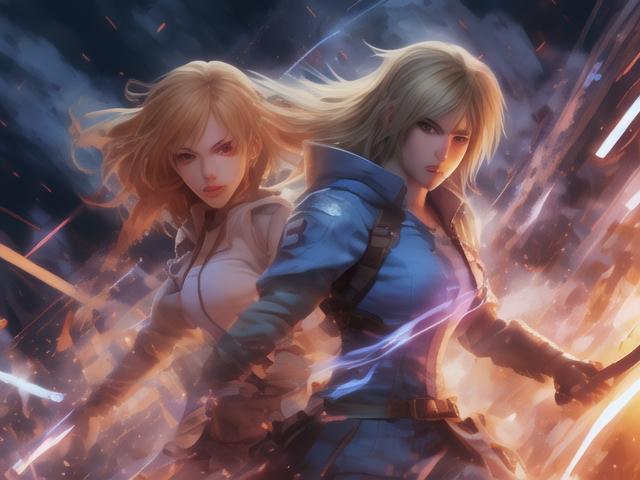Title: Unleashing Creativity through Technology: A New Era of Artistic Innovation
Content:

In the rapidly evolving digital age, technology has become an indispensable tool for artists and creators, transforming the way we perceive, produce, and consume art. The fusion of creativity and technology has opened new avenues for artistic expression, paving the way for a new era of innovation. This article explores the fascinating realm of creative technology, highlighting its impact on the art world and the endless possibilities it offers to artists.
The Digital Canvas: A New Medium for Art
One of the most significant contributions of technology to the art world is the creation of the digital canvas. With the advent of computers, graphic tablets, and digital painting software, artists can now create works of art with precision and ease, blending traditional techniques with cutting-edge technology. Digital art has become a popular medium, attracting both seasoned artists and aspiring newcomers.
Digital painting tools like Adobe Photoshop, Corel Painter, and Procreate provide artists with a vast array of brushes, textures, and effects, allowing them to experiment with different styles and techniques. This flexibility has led to a surge in innovative art forms, such as digital surrealism, abstract art, and even interactive installations that respond to the viewer's input.
Virtual Reality and Augmented Reality: Immersive Art Experiences
Virtual Reality (VR) and Augmented Reality (AR) have revolutionized the way we experience art. These technologies transport viewers into immersive environments, blurring the lines between reality and imagination. Artists can now create interactive installations that allow viewers to explore and interact with their work in ways that were previously unimaginable.
VR art exhibitions offer a unique opportunity for artists to showcase their work in a fully immersive setting. Visitors can wander through virtual galleries, view artwork from multiple angles, and even manipulate the pieces to gain a deeper understanding of the artist's vision. AR, on the other hand, overlays digital content onto the physical world, creating a seamless blend of the real and the virtual.
3D Printing: From Concept to Reality
3D printing has revolutionized the art world by allowing artists to transform their digital creations into physical objects. This technology has enabled artists to bring complex and intricate designs to life, pushing the boundaries of traditional craftsmanship. From sculptures and jewelry to furniture and architectural models, 3D printing has opened up new possibilities for artists to explore their creativity.
The ability to create physical replicas of digital art pieces has also led to the rise of collectible art. Artists can now produce limited edition sculptures or objects that can be sold to collectors, generating new revenue streams and fostering a sense of exclusivity.
AI and Machine Learning: The Art of Collaboration
Artificial Intelligence (AI) and machine learning have entered the art world, offering a new dimension to creative collaboration. AI algorithms can analyze vast amounts of data to identify patterns and trends, which artists can then use to inspire their work. Additionally, AI can assist in the creation of art by generating compositions, suggesting color palettes, and even composing music.
While some artists view AI as a threat to their craft, others embrace the technology as a tool to expand their creative horizons. Collaborations between humans and AI have resulted in groundbreaking works that challenge traditional definitions of art and creativity.
The Future of Art and Technology
As technology continues to advance, the future of art and technology looks promising. We can expect to see even more innovative tools and platforms that will further blur the lines between the digital and physical worlds. The following developments are likely to shape the future of creative technology:
1、Blockchain for Art Authentication and Provenance: Blockchain technology can ensure the authenticity and provenance of digital art pieces, providing artists with a secure way to protect their work and collectors with confidence in their investments.
2、Artificial Intelligence as a Creative Partner: AI will become an even more integral part of the artistic process, offering personalized assistance and collaboration to artists, enabling them to explore new styles and techniques.
3、Internet of Things (IoT) in Art Installations: IoT devices will enable artists to create interactive and responsive installations that can adapt to their surroundings and the viewer's behavior, providing a unique and personalized experience.
In conclusion, the fusion of creativity and technology has opened new doors for artists, offering them unprecedented opportunities to express their ideas and connect with audiences. As technology continues to evolve, we can look forward to a future where art and technology will continue to inspire and transform the world around us.